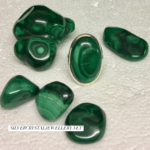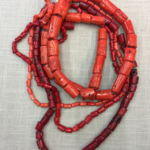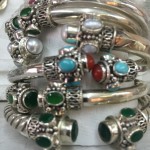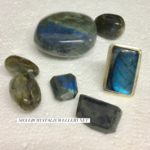Citrine is a variety of a quartz stone which is usually yellowish to brownish in color. Jewelers find use for this type of quartz as a gem setting on a ring or necklace.
 Citrine happens to be the most valuable quartz gemstone.
Citrine happens to be the most valuable quartz gemstone.
How it is formed
Under natural conditions, citrine is colored yellow to orange and is generally of a lighter shade compared to the heat-treated stones which usually turn reddish-brown or orange brown. Most citrines sold to the public are amethysts that have been treated with heat. In some cases, the crystals in amethyst deposits can be changed partially or fully to a citrine mineral of the brown variety mainly by natural means of heating. In other cases, treating smoky quartz with heat can also produce citrine.
Citrine is naturally an amber-colored stone. It is a combination of ferric iron and quartz and is rarely found naturally but can be manufactured artificially from other gem stones. Brazil is the leader in the production of commercially manufactured citrine, specifically from Rio Grande des Sul.
Citrine in History
Citrine was also used in ancient times as an amulet to protect the bearer or the wearer from a snake’s venom and even evil thoughts. It is also one of two birthstones for the month of November.
Chemical Composition of Citrine
The chemical composition of citrine is silicon dioxide. The crystals formed follow a hexagonal structure which commonly shows as clusters of pyramids based on a geode. They could also come in short, terminated crystals either singly or in aggregates. They can also come in massive and crusty forms. It can be transparent to translucent. However, it basal cleavage is indiscernible. It has a specific gravity of 2.6-2.7 and they are also predisposed to fracturing because of its inherent brittleness.
Citrine does not appear commonly and only appear in smaller quantities compared to other quartz deposits. Mostly, this gemstone can be found in Minas Gerais, Brazil and also in the Ural Mountains in Russia, Madagascar and Dauphine, France. However, the majority of them are really manufactured through heat treatment instead of natural means.
Naturally Occurring Citrines
To the untrained eye, it is easy to mistake a topaz for a citrine. Some unscrupulous individuals have begun to hype up the market with citrine as a more valuable variety of topaz. In general, all topazes with a prefix are considered heat-treated citrine such as Madeira topaz, gold topaz, Brazilian topaz, false topaz and citrine topaz. The only three exceptions to this rule are oriental topaz, precious topaz and imperial topaz, which are incidentally the most-sought after topaz varieties.
 The experts in the jewelry industry have come up with ingenious ways of producing more expensive specimens of amethyst and smoky quartz. In nature, citrines are usually pale yellow but the heat treated specimens come out as orange or reddish shades. Under natural conditions citrine starts out as amethyst then changes to citrine due to heat emitted by magnetic bodies. Citrine from amethyst can be changed back to a purple shade through the process of beta radiation. A popular gemstone, ametrine, is in fact a combination of amethyst and citrine.
The experts in the jewelry industry have come up with ingenious ways of producing more expensive specimens of amethyst and smoky quartz. In nature, citrines are usually pale yellow but the heat treated specimens come out as orange or reddish shades. Under natural conditions citrine starts out as amethyst then changes to citrine due to heat emitted by magnetic bodies. Citrine from amethyst can be changed back to a purple shade through the process of beta radiation. A popular gemstone, ametrine, is in fact a combination of amethyst and citrine.
Author: Dr. Mark Clayson
Eric Hartwell oversees “The World’s Best Homepage” intended to be a user-generated resource where YOUR opinion counts. Anybody can contribute and all are welcomed. Visit us to read, comment upon or share opinions on jewelry and visit his associated site for unique jewelry.
The history of citrine is bound up with that of yellow topaz, since the two stones can easily be mistaken for one another. Citrine is usually mistaken for (or misleadingly sold as) the more expensive topaz but both have been highly …
Citrine – November’s Gemstone of a Golden Gleam
But beyond its modern-day uses and associations, citrine holds a decadent mythological, spiritual and etymological history that adds nostalgic value to its already strong aesthetic worth.
Citrine permanently changes color if left in the sunlight for several hours, hence citrine jewelry should be kept away from prolonged exposure to strong light or heat. From the stone history: Citrine is a gemstone which has been used in …
Article Source: http://EzineArticles.com/?expert=Dr._Mark_Clayson



